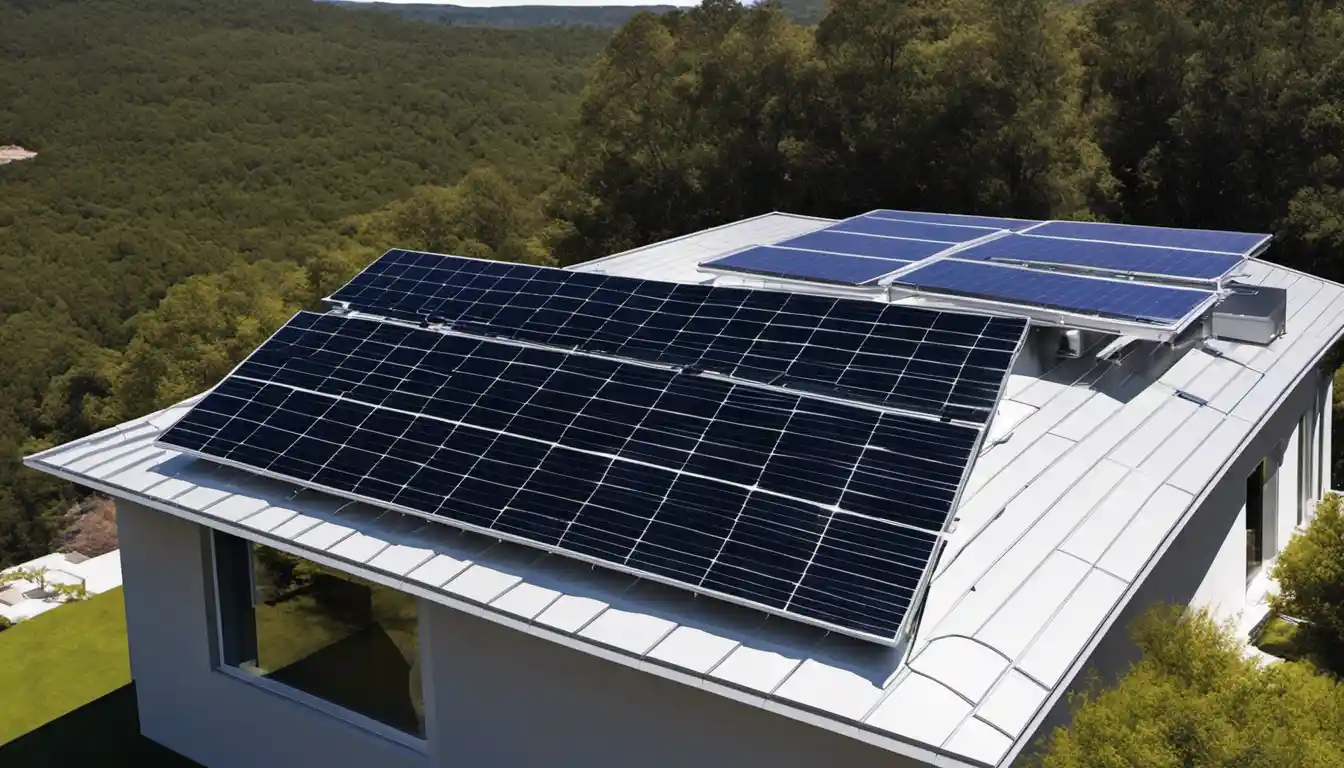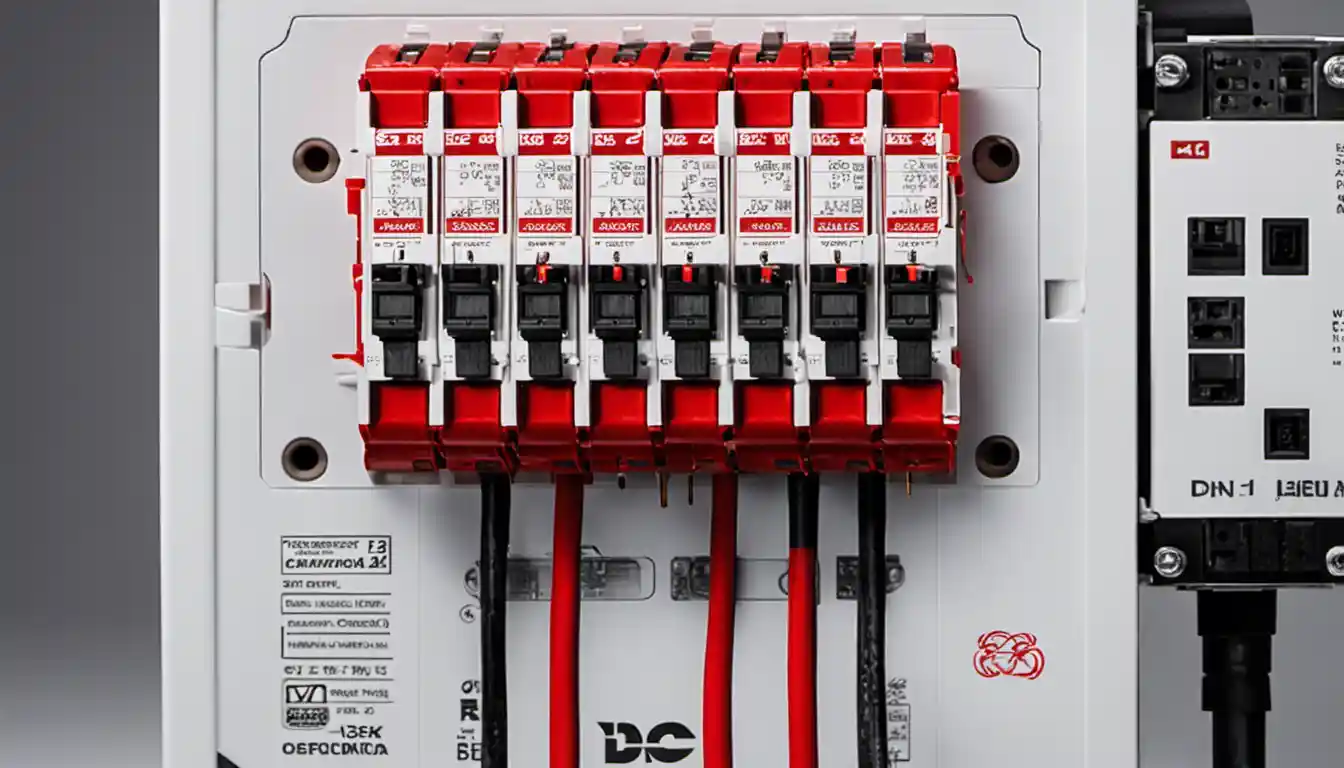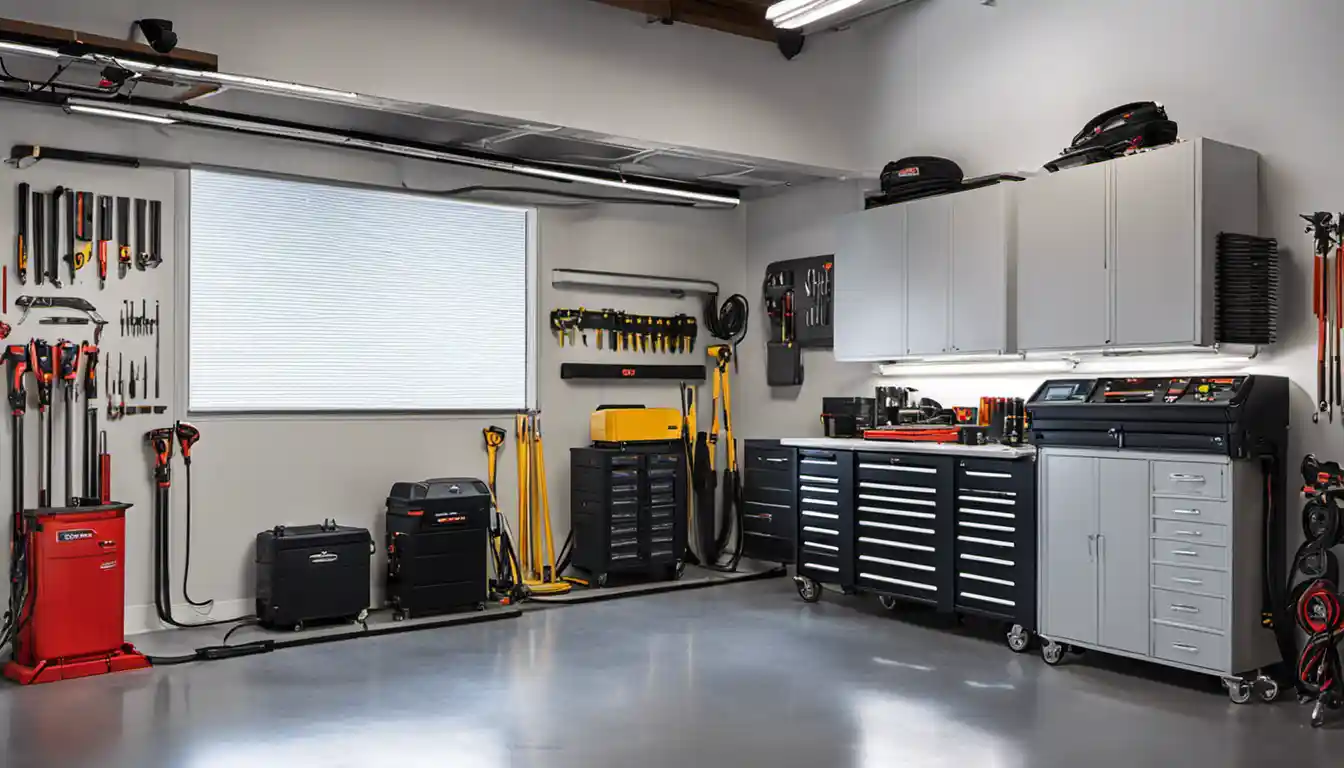Understanding Hybrid Solar Systems
Installing a hybrid solar system involves professional help due to its complexity. First, a solar panel installer will need to survey your property and design a system that meets your specific needs. They will install solar panels, usually on the roof, and connect it to a solar inverter, as well as a battery for energy storage and grid connection.
What Is a Hybrid Solar System?
A hybrid solar system is a combination of a traditional solar PV system and a battery storage solution that is connected to the grid. It essentially allows for energy production and storage, making it possible to harness solar power even after sunset. Put simply, it’s the best of both worlds – solar energy and grid electricity! Want to learn more about it? Check out my definitive article on “/what-is-a-hybrid-solar-system”.
Advantages of Hybrid Solar Systems
Hybrid solar systems offer numerous benefits! They provide energy independence by storing excess solar power for use during power outages. This creates a fantastic backup plan allowing for reduced electricity bills by using less grid electricity—especially during peak tariffs. They also enable you to sell surplus power back to the grid, helping you earn from your investment!
Disadvantages of Hybrid Solar Systems
Nevertheless, no good thing comes without its flip side. The initial costs for hybrid solar systems are generally higher than regular on-grid systems due to the inclusion of batteries. Plus, batteries have a shorter lifespan than solar panels, requiring replacement after a certain time. However, overall, benefits still outweigh disadvantages.
How Do Hybrid Solar Systems Work?
Hybrid solar systems work by collecting sunlight through solar panels during the day, converting it into electricity, and storing the excess power in the battery for later use. When the battery is fully charged, the excess energy is sold back to the grid. Conversely, if the system runs out of power, it switches over to grid electricity.
Cost and Benefits Analysis
The Cost of Installing a Hybrid Solar System at Home
The cost of installing a hybrid solar system varies depending on many factors, including system size, the complexity of installation, quality of materials, and location. On average, you could be looking at anywhere between $10,000 and $15,000 for a 5KW system.
Benefits of Using a Hybrid Solar System

Aside from environmental perks, the financial savings of using a hybrid solar system are substantial, with a return on investment potentially met in just a few years. Moreover, the ability to store and tap into the energy reserve during off-peak hours or emergencies is invaluable.
Cost-Effectiveness
Over the long term, the cost-effectiveness of a hybrid solar system is undeniable. This system enables you to become less reliant on grid energy and even sell back excess energy, which can significantly offset the initial system costs.
Flexibility and Scalability
Hybrid solar systems offer flexibility by allowing you to choose between using stored solar energy or selling it back to the grid. They’re also scalable, meaning you can gradually expand your system as your energy needs and budget grow.
Environmental Sustainability
By switching to a hybrid solar system, you’re contributing to an eco-friendlier planet by reducing CO2 emissions and using renewable energy.
Reducing the Risk of Power Outages
A hybrid solar system provides a power supply during outages, keeping the lights on when the main power grid fails, providing peace of mind during extreme weather or rolling blackouts.
Overview of Hybrid Solar System Kit Components
A hybrid solar power system installation needs several components, each with its own unique function.
Solar panels
These panels absorb sunlight and convert it into direct current (DC) power. Quality matters here—opt for high-performance panels designed to withstand various weather conditions.
Racking and Mounting
Racking is used to secure solar panels on your roof or ground-level installation site.
DC Circuit Breaker

This device protects your system from electrical overloads by interrupting the flow of current when a fault is detected.
DC Surge Protective Device
This safeguards your solar power system from power surges or lightning.
Solar Grid-tied Inverter
The inverter converts DC power from solar panels into AC power used in most homes. In addition, it facilitates the two-way exchange of power between your solar system and the grid.
AC Isolator Switch
This safety device enables you to completely shut down the AC supply when needed.
Electrical Wiring
Safe and durable wiring for efficient electrical transmission.
Solar Battery Bank
Storage for the excess solar power produced during the day for use during the night or power outages.
Steps to Install Hybrid Solar System
Process of Installing a Solar Hybrid Inverter
Now, as we delve into “how to install hybrid solar system”, remember that while some steps might seem simple, others can be highly technical and may require professional help. So let’s get started!
-
Site Inspection: Determine the most suitable location for the solar panels, usually the rooftop where maximum sunlight can be harnessed.
-
Install Mounts: Using brackets and bolts, install the racking or mounting system where the solar panels will be placed
-
Place Solar Panels: Securely attach solar panels onto the mounting hardware
-
Set Up the Inverter: Install the solar inverter at a secure location within the house, free from direct sunlight or moisture.
-
Wiring: Carefully connect the solar panels to the inverter using the appropriate cables and wiring.
-
Install Battery Storage: Identify a suitable safe location and set up your battery system. Connect it to the solar inverter.
-
Checking & Activation: Once everything’s set up, test the system for any issues and activate it.
Where to Install the Solar Hybrid Inverter

The inverter should be installed in a well-ventilated, dry area free from direct sunlight or weather extremities. The location must allow easy access for regular inspection or maintenance.
Hybrid Solar System Design Calculation
One of the most crucial aspects of “how to install hybrid solar system” is the “hybrid solar system design calculation”. It involves determining your average daily power consumption, the size and number of panels you’ll need, battery requirements, and the best orientation and tilt for the panels. It’s a detailed process that involves a thorough understanding of solar photovoltaic systems.
DIY vs. Professional Installation
Can You Install a Hybrid Solar System Yourself?
While some ardent DIY enthusiasts might be tempted to install their hybrid solar system, it’s worth noting that the process is complex and needs a solid understanding of electrical systems. Therefore, professional installation is highly recommended.
Advantages and Disadvantages of Self-Installed Solar Systems
DIY installation might help save installation costs, but it comes with a risk of improper installation, electrical accidents, and voided warranties. A professional installer, on the other hand, comes with a workmanship warranty, knows local regulations, and ensures safety and efficiency.
Safety Measures
Safety Tips While Installing Solar Hybrid System
Always prioritize safety. Use protective gear, follow manual instructions, and shut down the grid supply during installation. Never work on a wet roof, disconnect the system before carrying out any maintenance, and ensure that all wires and connections are secure.
Conclusion: Do Hybrid Solar Systems Worth It?
In a word, absolutely! The initial costs of a hybrid solar system can be substantial, but ample returns from energy savings, energy selling, grants, and maintaining a power backup make it a truly worthwhile investment.
Now that you are armed with all the knowledge you need on “how to install a hybrid solar system”, the next step is making the leap to cleaner, greener, cheaper energy!



